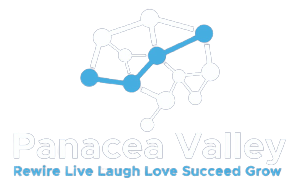Some people have a sought after skill of effortlessly influencing others, while some struggle to even get their point across.
The secret often lies in Neuro-Linguistic Programming (NLP). This powerful tool can transform how you think, communicate, and act. Did you know that companies using NLP techniques report a 30% increase in sales performance? Or that 77% of professionals who practice NLP feel more in control of their lives? NLP can have a profound impact on people’s lives.
But what exactly are these techniques, and how can you implement them in your daily life or career as an Online NLP Practitioner?
Here is a quick run through of NLP techniques – from concept to implementation:
1. Anchoring: Triggering Positive States
Anchoring is an NLP technique that involves creating a mental link between a specific stimulus and a desired emotional state. It is similar to setting a mental “anchor” that you can tap into when needed.
Ever noticed how a particular song can instantly make you feel happy or nostalgic? That’s anchoring in action.
To create a positive anchor, follow these steps:
- Identify the desired state: Choose the emotion or state of mind you want to anchor, like confidence or calmness.
- Select a unique stimulus: This could be a physical gesture, a word, or even a visual cue.
- Intensify the experience: Recall a vivid memory of a time you felt this way. Relive it in your mind as strongly as possible.
- Establish the anchor: While experiencing the heightened emotion, apply your chosen stimulus. Repeat this several times.
Use this technique before important meetings or presentations to maintain a positive and empowered state.
2. Reframing: Changing Perspectives
Reframing is about changing the way you perceive a situation to alter its meaning. It’s a powerful way to turn problems into opportunities. Cognitive reframing can reduce stress and improve problem-solving skills by 20%.
Here’s how you can use the “reframe” technique:
- Identify the situation: Pinpoint what’s bothering you.
- Find alternative perspectives: Contemplate with questions like, “How else can I look at this?” or “What’s the silver lining?”
- Choose a positive frame: Shift your focus to the potential benefits or lessons from the situation.
For example, if you miss a promotion, instead of dwelling on the loss, view it as a chance to gain more experience and better prepare for the next opportunity.
3. Mirroring: Building Rapport
Mirroring involves subtly copying another person’s body language, tone, and behavior to build rapport and trust. Mirroring, is also said to increase the chances of a positive outcome in negotiations by up to 67%.
Mirroring can be particularly effective in interviews, sales pitches, or any situation where building a connection is crucial.
To use mirroring:
- Observe the other person: Pay close attention to their body language, speech patterns, and gestures.
- Subtly mirror their actions: Match their posture, tone of voice, and pace of speech. Be natural and avoid being obvious.
4. Swish Pattern: Reprogramming the Mind
The Swish Pattern is an NLP technique used to change negative thought patterns and behaviors. It’s somewhat like hitting the mental reset button.
Here’s how you can implement the Swish Pattern:
- Identify the unwanted behavior: Visualize the behavior or thought you want to change.
- Create a compelling positive image: Imagine a picture of how you’d like to behave or feel instead.
- Swish the images: Visualize the negative image, then quickly replace it with the positive image. Repeat this process, making the positive image more vivid each time.
This technique is particularly useful for overcoming habits like procrastination or negative self-talk.
5. Meta Model: Clarifying Communication
The Meta Model is an NLP tool for challenging and expanding someone’s statements to clarify their thoughts and beliefs. It’s an advanced questioning technique.
What the Meta Model includes:
- Identify deletions, distortions, and generalizations: Notice when information is missing, altered, or overly broad.
- Ask clarifying questions: Use questions like “What specifically?” or “How do you know that?” to gather more information.
For instance, if a colleague says, “We never meet our targets,” you might ask, “What specific targets are we missing?” and “What evidence do we have for this?”
6. Chunking: Managing Information
Chunking is about breaking down large amounts of information into smaller, manageable pieces. This technique can improve memory and learning efficiency by up to 40%.
To practice chunking:
- Group related information: Organize data into categories or themes.
- Use hierarchical structures: Break down information into main points and subpoints.
For example, when preparing a presentation, chunk your content into key themes and supporting details. This makes it easier for your audience to follow and for you to deliver.
Implementing NLP in Daily Life and Career
As an Online NLP Practitioner, implementing these techniques can profoundly impact your personal and professional life. Here’s how:
- Daily Practice: Use anchoring to start your day with positivity, reframing to tackle challenges, and chunking to manage your tasks.
- Professional Development: Apply mirroring to build rapport with colleagues and clients, the Swish Pattern to overcome professional obstacles, and the Meta Model to enhance communication.
- Continuous Learning: Enroll in an NLP course online to deepen your understanding and refine your skills. Whether you’re looking for NLP training for personal growth or a free NLP course, resources like Panacea Valley offer a variety of options to suit your needs.
Unlocking Potential with NLP
NLP techniques are not just theoretical concepts; they are practical tools that can transform your mindset, communication, and behavior. By understanding and implementing these strategies, you can unlock new levels of personal and professional success.
Start your journey today with an NLP course online with Panacea Valley, and see how these techniques can reshape your reality. Remember, the power to change lies within you—use these tools to harness it.

